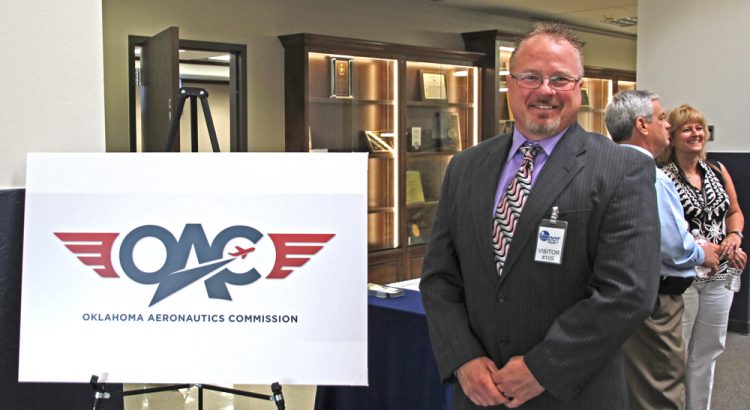While school children were busy last week donning protective eye wear, looking with wonder at the solar eclipse, the Oklahoma Aeronautics Commission was authorizing plans to assist the next generation of Oklahoma’s youth in exploring the solar system and beyond through flight.
Twenty-five organizations were recently awarded Aerospace and Aviation Education Program grants or contracts totaling over $270,000 from the Oklahoma Aeronautics Commission (OAC). The record amount of funds will be used to educate more school-aged children in Oklahoma to STEM (science, technology, engineering and math) careers, particularly those in aerospace and aviation. The funding was approved by the Commission at their most recent meeting.
With the release of a two-year study on the Economic Impact of Aviation & Aerospace and Oklahoma, agency director Vic Bird feels confident that the program is working. “Aviation and Aerospace industries in Oklahoma support $43.7 Billion in annual statewide economic activity, and we must prepare our young people to be part of that workforce, directing them into STEM and aerospace engineering, as well as becoming pilots.”
Director of Aeronautics Vic Bird said aerospace is now one of the state’s top two industry ecosystems and when all direct, indirect, and induced impacts are considered, there are almost 240,400 jobs that are supported by or benefit from aviation and aerospace.
The program, which has been awarding aviation education grants for over 30 years, is part of the OAC mission to encourage and promote aviation throughout the state of Oklahoma.
“This year’s program received 29 applications by the May 31 deadline. Of those, 25 were recommended to the Commission for approval at the August 23 meeting,” said Catherine Taber, aviation program manager and aviation education coordinator for the Commission.
Recognized nationally as having one of the most robust aviation education programs among state aviation agencies, OAC has provided nearly $1.9 million in education funding within the last 10 years alone.
“This was the agency’s biggest year in terms of funding requests totaling over $640,000. We are always excited to see new applicants and the Commission welcomed new programs such as Ada City School District, Cameron University, and Tulsa Community WorkAdvance, among others,” Taber said.
In order for a program to be eligible for an aviation education grant or contract, it must meet certain requirements in the Oklahoma Administrative Code. Most importantly, the program must demonstrate that its curriculum is geared toward aviation and aerospace. Applicants must provide receipts and are only reimbursed for those items outlined in the application for their program.
The following grants were approved by OAC Commissioners August 23:
Ada City School District, $15,000
Cameron University, $10,300
Enid Public Schools, $9,890
FIRST Robotics Competition, Oklahoma Region, $5,000
Fort Gibson High School Robotics, $1,600
KISS Institute for Practical Robotics, $10,500
Merritt Public Schools, $1,500
MetroTechnology Centers, Aviation Career Campus, ACE Camp, $13,240
Newspapers in Education Institute, $5,000
Oklahoma Foundation for Excellence, Oklahoma Education and Industry Partnership (OEIP), $7,500
Oklahoma Engineering Foundation, $5,000
Oklahoma State University, Speedfest, $12,500
Ponca City Regional Airport, Northern Oklahoma Flight Academy, $10,200
Rose State College, Aerospace Discovery Camp, $12,000
Salina Public Schools, $8,492
Southeastern Oklahoma State University, SE Take Flight! Camp, $6,000
Space Pal USA, $5,000
Stafford Air & Space Museum, $15,107
STARBASE Oklahoma Inc., $27,500
Thick Descriptions, $6,630
Tulsa Air & Space Museum, $11,500
Tulsa Airports Improvement Trust, $11,500
Tulsa Community WorkAdvance, $16,720
Tulsa Regional STEM Alliance, $5,000
University of Oklahoma, Sooner Flight Academy, $46,750
Pictured is Roy Bartnik, recipient of an aviation education grant for Enid School District for an Elementary STEM Pathway for students to eventually enter the Pre-Engineering Aerospace Pathway at the high school level. Goals of the program included engaging 5th grade students in cross-disciplinary activities, projects, and problems that were reflective of real-world challenges that may occur in aerospace engineering and improving and increasing teachers’ effectiveness and confidence in implementing STEM-centric course content. It was estimated that 650 students would participate.



